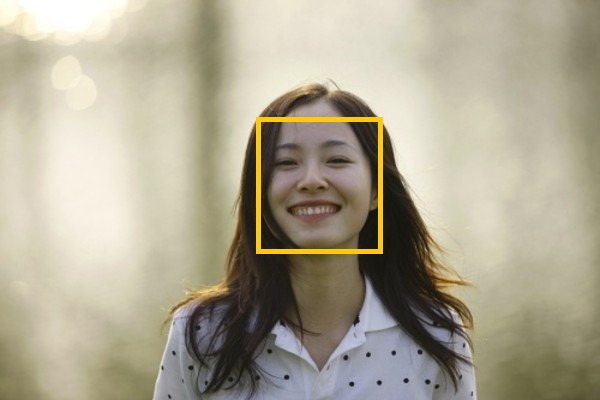非极大值抑制算法
来源:互联网 发布:smo算法 python实现 编辑:程序博客网 时间:2024/05/29 19:19
出处:http://www.cnblogs.com/liekkas0626/p/5219244.html
1. 算法原理
非极大值抑制算法(Non-maximum suppression, NMS)的本质是搜索局部极大值,抑制非极大值元素。
2. 3邻域情况下NMS的实现
3邻域情况下的NMS即判断一维数组I[W]的元素I[i](2<=i<=W-1)是否大于其左邻元素I[i-1]和右邻元素I[i+1],算法流程如下图所示:

a. 算法流程3-5行判断当前元素是否大于其左邻与右邻元素,如符合条件,该元素即为极大值点。对于极大值点I[i],已知I[i]>I[i+1],故无需对i+1位置元素做进一步处理,直接跳至i+2位置,对应算法流程第12行。

b. 若元素I[i]不满足算法流程第3行判断条件,将其右邻I[i+1]作为极大值候选,对应算法流程第7行。采用单调递增的方式向右查找,直至找到满足I[i]>I[i+1]的元素,若i<=W-1,该点即为极大值点,对应算法流程第10-11行。

3. NMS在物体检测中的应用
物体检测中应用NMS算法的主要目的是消除多余(交叉重复)的窗口,找到最佳物体检测位置。


如上图所示,人脸检测中,虽然每个窗口均检测到人脸,但仅需给出一个最有可能表征人脸的窗口。
function pickLocate = nms(boxes, overlap) % Non-maximum suppression.% In object detect algorithm, select high score detections and skip windows% covered by a previously selected detection.%% input - boxes : object detect windows.% xMin yMin xMax yMax score.% overlap : suppression threshold.% output - pickLocate : number of local maximum score. boxes = double(boxes); if isempty(boxes) pickLocate = [];else xMin = boxes(:, 1); yMin = boxes(:, 2); xMax = boxes(:, 3); yMax = boxes(:, 4); s = boxes(:, end); % area of every detected windows. area = (xMax - xMin + 1) .* (yMax - yMin + 1); % sort detected windows based on the score. [vals, I] = sort(s); pickLocate = []; while ~isempty(I) last = length(I); i = I(last); pickLocate = [pickLocate; i]; suppress = [last]; for pos = 1 : last - 1 j = I(pos); % covered area. xx1 = max(xMin(i), xMin(j)); yy1 = max(yMin(i), yMin(j)); xx2 = min(xMax(i), xMax(j)); yy2 = min(yMax(i), yMax(j)); w = xx2 - xx1 + 1; h = yy2 - yy1 + 1; if ((w > 0) && (h > 0)) % compute overlap. o = w * h / min(area(i), area(j)); if (o > overlap) suppress = [suppress; pos]; end end % xx1 = max(x1(i), x1(I(1:last-1))); % yy1 = max(y1(i), y1(I(1:last-1))); % xx2 = min(x2(i), x2(I(1:last-1))); % yy2 = min(y2(i), y2(I(1:last-1))); % w = max(0.0, xx2-xx1+1); % h = max(0.0, yy2-yy1+1); % inter = w.*h; % o = inter ./ (area(i) + area(I(1:last-1)) - inter); % saving the windows which o less than threshold. % I = I(o <= overlap); end I(suppress) = []; endend
0 0
- 非极大值抑制算法
- 非极大值抑制算法
- 非极大值抑制算法
- 非极大值抑制算法
- 自适应非极大值抑制算法
- 非极大值抑制算法 NMS
- matlab下 非极大值抑制算法
- 非极大值抑制算法 (NMS)
- NMS—非极大值抑制算法
- 非极大值抑制
- matlab 非极大值抑制
- NMS非极大值抑制
- 非极大值抑制
- 非极大值抑制 NMS
- 非极大值抑制原理
- 非极大值抑制NMS
- MOPS中ANMS(非极大值抑制)算法讨论
- 非极大值抑制(NMS)
- JAVA的solr操作实现(基本操作)
- java当中的定时器的4种使用方式
- 求结构体的偏移量方法
- L2-010. 排座位 (并查集简单应用)
- GCC C语言处理主要函数之c_objc_common_init
- 非极大值抑制算法
- 语言数据联盟( linguistic data consortium,LDC)
- Python Machine Learning
- 移动端的布局:flex布局
- GCC C语言处理主要函数之c_common_init
- solr6.3安装部署
- 图片压缩大小清晰度测试
- CCF201403-1-相反数
- 题目1004:Median


